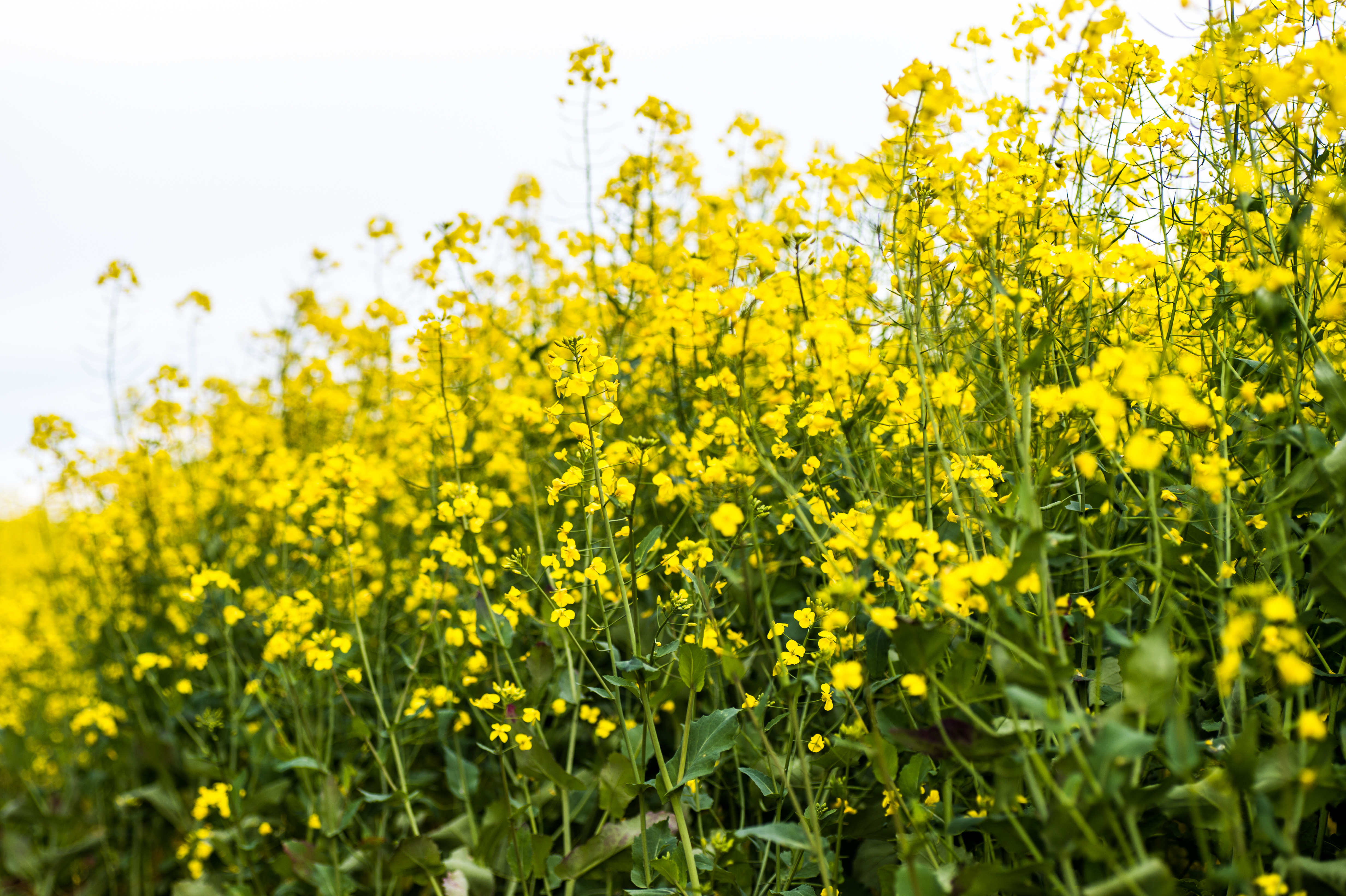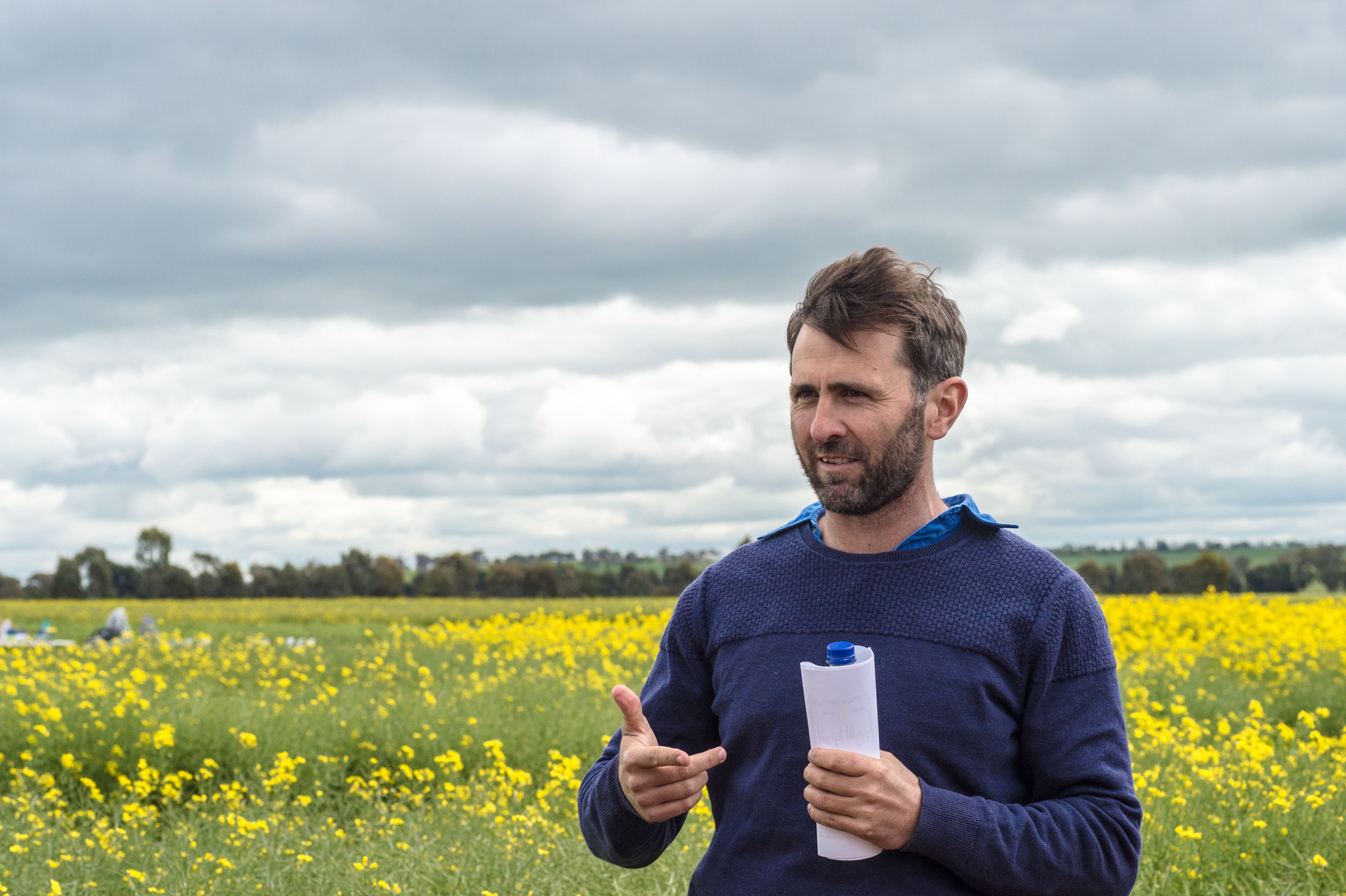Paddock Practices: Top tips for canola agronomy
Paddock Practices: Top tips for canola agronomy
Author: Rachael Oxborrow | Date: 29 Aug 2018
A GRDC investment has uncovered the importance of providing adequate nitrogen to canola crops at the right time in order to increase yield and profitability.
The Optimised Canola Profitability (OCP) project is a collaboration between the GRDC, New South Wales Department of Primary Industries (NSW DPI), CSIRO and the South Australian Research and Development Institute (SARDI*).
Research conducted as part of this investment has found that getting the best out of canola is a matter of ensuring canola flowers close to the optimal start of flowering (OSF) date – when flowering should be targeted to start – and that the crop has access to enough nitrogen for its grain yield potential.
To assist growers in making their cropping program decisions, researchers have developed the guide Ten Tips to Early-Sown Canola, which takes into account changing rainfall patterns, variety selection and other tactical agronomic factors.
The guidelines list the following:
- Consider your location
- Select a slower developing variety
- Manage fallows and residues
- Manage seed placement
- Adjust seeding rates
- Carefully manage weeds
- Select fertile paddocks
- Consider pests and insects
- Consider disease pressure
- Assess croptop/windrow timing
NSW DPI research and development agronomist Rohan Brill says like most crops, OSF dates for canola are a balance between minimising the stresses of heat, frost, drought and disease, while maximising the crop’s ability to achieve a high grain yield.
Location and variety selection
The OCP project has identified OSF dates for a number of locations across the southern region (table 1).
| Location | OSF date |
|---|---|
| Victoria | |
| Birchip | 13 July |
| Mildura | 14 July |
| Ouyen | 15 July |
| Bendigo | 7 August |
| Horsham | 7 August |
| Shepparton | 7 August |
| Inverleigh | 9 August |
| Rutherglen | 14 August |
| Hamilton | 14 August |
| Wagga Wagga, NSW | 5 August |
| South Australia | |
| Wudinna | 14 July |
| Minnipa | 15 July |
| Kadina | 16 July |
| Minlaton | 17 July |
| Yeelanna | 18 July |
| Loxton | 19 July |
| Karoonda | 19 July |
| Bute | 20 July |
| Lameroo | 22 July |
| Booleroo Centre | 24 July |
| Hart | 25 July |
| Tarlee | 26 July |
| Spalding | 26 July |
These dates have been developed from four years of field experiments and modelling in APSIM® in conjunction with historical meteorological records.
Mr Brill says a pattern which has emerged from trials conducted as part of the OCP project is that biomass has been a large driver of yield and underpinning biomass production is both flowering date and nitrogen management.
“In our 2017 trials, flowering date was king in driving not just biomass but grain yield as well,” he says.
“The thing about getting flowering date right is that it doesn’t cost anything – it is just a matter of being ready to sow the right variety at the right time.
“The other thing about flowering date is that it has a big effect on biomass accumulation and the crop’s exposure to stress, whether that be heat stress, frost or drought.”
Variety selection decisions for mid-slow or slow developing varieties can be made with OSF of your location in mind.
“Sowing faster developing varieties early expose the crop to greater frost and disease risk,” Mr Brill says.
“We observed slower developing varieties sown at a range of sowing dates to produce similar yields when hitting the OSF.
“This gives growers much more flexibility in their sowing program.”

Nitrogen optimisation
Another key learning from the OCP project has been the different nitrogen management strategies required for different types of canola grown, whether that be hybrid varieties such as Diamond or open pollinated (OP) triazine-tolerant (TT) varieties such as ATR Stingray.
At Longerenong, Victoria, in 2017, there was no effect of sowing date on grain yield as there was a much wider OSF window due to lower disease pressure, minimal frost and a clear/bright winter.
At the same location, hybrid varieties responded better to higher rates of nitrogen than OP TT varieties (table 2).
“For the hybrid varieties at Longerenong, there was an average grain yield increase of 0.7 tonnes per hectare from increasing the nitrogen rate from 20 kilograms per hectare to 180kg/ha,” Mr Brill says.
“However, for OP TT varieties, there was only a 0.2t/ha increase from the higher rate of nitrogen.
“The high rate of nitrogen reduced average oil concentration across all varieties from 45.1 per cent to 42.8 per cent.
“With only a modest grain yield increase from higher nitrogen for the OP TT varieties, there would have been an economic loss (assuming a nitrogen cost of $1/kg) from increasing the nitrogen rate from 20kg/ha to 180kg/ha, however the total gross income benefit for the hybrids was $291/ha which would have made the higher nitrogen rate profitable.
“While hybrid seed is more expensive than OP TT, this cost would have already been repaid by the higher yields at the low nitrogen rate.”
20kg/ha nitrogen | |||
|---|---|---|---|
Type | Grain yield (t/ha) | Oil concentration (%) | Gross income ($/ha) |
Hybrid | 3.7 | 45.2 | 1939 |
OP TT | 3.4 | 45 | 1777 |
180kg/ha nitrogen | |||
Hybrid | 4.4 | 42.9 | 2230 |
OP TT | 3.6 | 42.7 | 1819 |
At Ganmain in southern NSW, nitrogen responses increased for varieties sown in their correct window.
Mr Brill says there was an overall benefit at Ganmain in southern New South Wales from planting hybrid varieties, however varietal choice was less important than ensuring the optimisation of sowing date, phenology and nitrogen management.
“For example, the OP TT variety ATR Wahoo sown early (8 April) with a high rate of nitrogen (170kg/ha) yielded 0.7t/ha above the trial mean yield of 2.1t/ha, whereas there were several treatments where hybrids with inappropriate management yielded less than the trial mean,” he says.

“Even at Lameroo, SA, where its low-rainfall status makes it a relatively risky environment for growing canola, there was a grain yield increase from planting hybrid varieties and applying robust – 70kg/ha – rates of nitrogen.”
On average, hybrid varieties in the Lameroo trial yielded 0.2t/ha more than OP TT varieties, with those treated with 70kg/ha nitrogen yielding an average of 0.4t/ha more than the 20kg/ha rate.
“As the cost of hybrid seed was approximately the same as the cost of increasing nitrogen rate from 20kg/ha to 70kg/ha in 2017, the return on investment was greater for increasing nitrogen rate,” Mr Brill says.
“In the longer term it would be best to sow canola on paddocks with high nitrogen availability such as after a pulse crop, rather than rely on high rates of nitrogen application to generate high yield.”
Researchers advise to aim for 80kg/ha of nitrogen per tonne of grain comprising soil mineral nitrogen, mineralised nitrogen in crop and fertiliser nitrogen for best results.
Pre-crop management
Profitable canola is as much driven by the pre-crop agronomy as it is the in-crop agronomy. Producers need to ensure that crop rotations, weed control and soil nutrition are all well managed in the seasons before a canola crop to get the best out of variety, sowing date and nitrogen decisions.
GRDC Project Code: CSP00187
More information
Rohan Brill, 02 6938 1989, rohan.brill@dpi.nsw.gov.au
Useful resources
GRDC - Ten tips to early sown canola
GRDC Update paper – Getting the best out of canola with in-crop agronomy
GRDC Project Code: CSP1706-015RMX,
